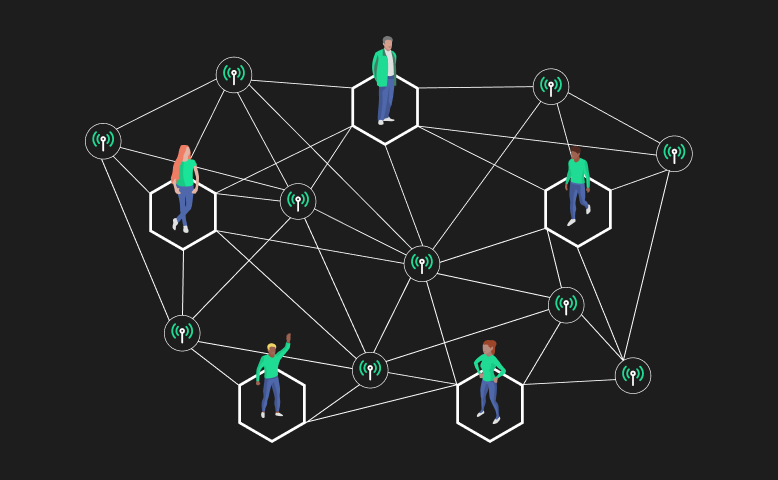Written by Nik Hawks (a.k.a. Gristle King)
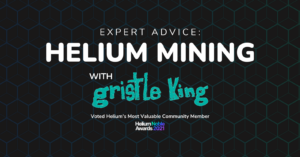
There are five fundamental concepts to know in order to optimize your HNT earnings. They are:
- WUPU Coverage
- Line of Sight
- Density Reward Effects
- Connection Stability
- Antenna Gain
Let’s go through ‘em all.
WUPU Coverage
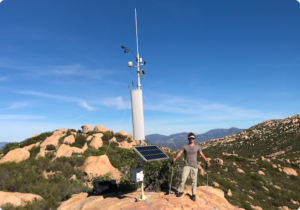 First is WUPU coverage. WUPU stands for Wide, Unique, Provable, and Useful. It describes the type of coverage that is most likely to be well rewarded. Wide coverage includes a large area and usually requires you to have your antenna up as high as possible in order to “see” as many other miners as possible. Unique coverage means that you’re not duplicating someone else’s placement. We’ll get into density reward effects later, but for now think of this in terms of a network trying to efficiently cover an area. You don’t need 2 miners to do the same thing; from a network perspective that’s a waste of resources, and is rewarded accordingly. Provable coverage is where your miner can prove its location by communicating with other miners through radio signals. If your miner can receive the radio signals of nearby miners, and those miners can also receive your transmissions, then you’re proving your location. The actual proof gets slightly more complicated, using signal strength and radio theory to predict acceptable boundaries for that signal strength, but at the base of it you’re simply proving your location through radio signals. It’s that easy. Useful coverage is what Helium was built for. In this case, the usability isn’t as important as the other three items in the short term. In the long term, the majority of your earnings will come from your Hotspot actually passing data through it.
First is WUPU coverage. WUPU stands for Wide, Unique, Provable, and Useful. It describes the type of coverage that is most likely to be well rewarded. Wide coverage includes a large area and usually requires you to have your antenna up as high as possible in order to “see” as many other miners as possible. Unique coverage means that you’re not duplicating someone else’s placement. We’ll get into density reward effects later, but for now think of this in terms of a network trying to efficiently cover an area. You don’t need 2 miners to do the same thing; from a network perspective that’s a waste of resources, and is rewarded accordingly. Provable coverage is where your miner can prove its location by communicating with other miners through radio signals. If your miner can receive the radio signals of nearby miners, and those miners can also receive your transmissions, then you’re proving your location. The actual proof gets slightly more complicated, using signal strength and radio theory to predict acceptable boundaries for that signal strength, but at the base of it you’re simply proving your location through radio signals. It’s that easy. Useful coverage is what Helium was built for. In this case, the usability isn’t as important as the other three items in the short term. In the long term, the majority of your earnings will come from your Hotspot actually passing data through it.
Line of Sight
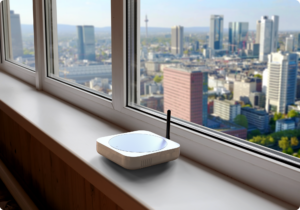
Understanding how important a clear line of sight is between your antenna and other antennas is crucial to predicting earnings. Several tools exist to assess this, both paid and free. I’ll list those at the bottom, under Resources. For now, when you’re planning your antenna placement, the more clear lines of sight it has (no building, trees, walls, or windows in the way) to other antennas, the better. Now, that’s not always possible. Sometimes you have to keep your antenna indoors, or you’re blocked by a hill, or a building, or a line of trees. In some of those instances you can make small changes that will help improve your line of sight. In others, you’re better off finding a new location.
Density Reward Effects
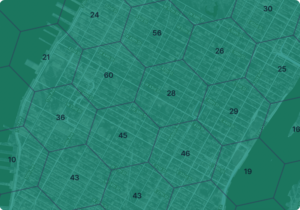
A Hotspot in an area with too many other Hotspots nearby will have its earnings negatively affected in three ways:
1. Scaled: Hotspots that are place in overly dense areas have their rewards scaled according to Helium Improvement Proposal 17 (HIP 17).
2. Split: As more and more Hotspots Witness a beacon (up to 14), the value of that Witness gets split between them.
3. Randomized: No more than 14 Hotspots can earn from a Witnessed Beacon. If more than 14 Hotspots Witness a Beacon, then only 14 are randomly selected to split that reward.
Understanding each of those technically requires significant study. Understanding each of them practically is simpler: When placing your Hotspot for maximum earnings, put it in an area that doesn’t currently have a lot of coverage but can still “see” plenty (at least 20) other Hotspots.
Connection Stability
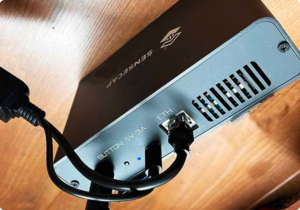 Until Light Hotspots come online, connection stability will remain a fundamental requirement for a high earning Hotspot. Hotspots are constantly updating their copy of segments of the blockchain. In order to do that, they need to have a stable connection to the internet. In First World terms it doesn’t need to be blazing fast, any cable connection will do. It does, however, need to be stable. WiFi connections are NOT stable. Ethernet (LAN) cable connections are. What does that mean for you? Make every attempt to connect your Hotspot to your home modem/router via an Ethernet cable. Avoid, at almost all costs, relying on WiFi for a connection. WiFi will work, it just won’t work well. If your Hotspot falls behind for any reason (WiFi goes down, or an Over the Air update from your Hotspot manufacturer comes through), your Hotspot has to catch back up to the leading edge of the blockchain before it can start earning again. That can take days.
Until Light Hotspots come online, connection stability will remain a fundamental requirement for a high earning Hotspot. Hotspots are constantly updating their copy of segments of the blockchain. In order to do that, they need to have a stable connection to the internet. In First World terms it doesn’t need to be blazing fast, any cable connection will do. It does, however, need to be stable. WiFi connections are NOT stable. Ethernet (LAN) cable connections are. What does that mean for you? Make every attempt to connect your Hotspot to your home modem/router via an Ethernet cable. Avoid, at almost all costs, relying on WiFi for a connection. WiFi will work, it just won’t work well. If your Hotspot falls behind for any reason (WiFi goes down, or an Over the Air update from your Hotspot manufacturer comes through), your Hotspot has to catch back up to the leading edge of the blockchain before it can start earning again. That can take days.
Antenna Gain
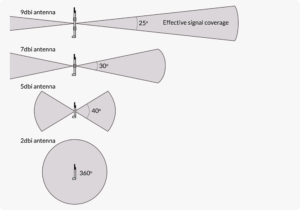 Antennas are where many Hotspot owners spend too much time and money trying to get the “perfect” setup. “Maximizing” antenna gain is one very effective way to waste your time. First, what is “gain”? Gain refers to the point of maximum energy in the shape of the pattern emitted by the antenna. A low gain antenna will be like a round balloon, emitting energy equally in all directions. A high gain antenna will be like a squashed balloon, emitting more energy in certain directions and less energy in others. In the normal world of radio (where ham radio and WISPs and other amateur and professionals operate) antenna gain can be critical. In Helium, due to the radio frequency and protocol we use, additional gain is generally not useful.
Antennas are where many Hotspot owners spend too much time and money trying to get the “perfect” setup. “Maximizing” antenna gain is one very effective way to waste your time. First, what is “gain”? Gain refers to the point of maximum energy in the shape of the pattern emitted by the antenna. A low gain antenna will be like a round balloon, emitting energy equally in all directions. A high gain antenna will be like a squashed balloon, emitting more energy in certain directions and less energy in others. In the normal world of radio (where ham radio and WISPs and other amateur and professionals operate) antenna gain can be critical. In Helium, due to the radio frequency and protocol we use, additional gain is generally not useful.
Increasing gain on an outdoor antenna will typically not increase its *useful* range. A low gain (3 dBi antenna) will routinely Beacon & Witness over 100km away. Now, that’s not a reliable way to earn, but 100km is NOT an unusual distance with clear line of sight. The only time it’s reasonable to deploy a higher gain antenna is when you have “known obstacles”. For example, you may be limited to only deploying indoors, and you know you’ll lose signal power as it goes through your walls, attic, windows, etc. In that case, a higher gain antenna, usually no more than 9 dBi, can be warranted. You will commonly see people testing higher and higher gains, thinking it will get them higher and higher earnings. Unless they are solving that specific problem of blasting through a known obstacle, a higher gain antenna will not add any significant value to their setup.
That wraps up the five fundamental things you should know in order to earn a maximum amount of HNT. Go out and use them wisely to improve the Network, and keep me posted on how it goes for ya!
RESOURCES


